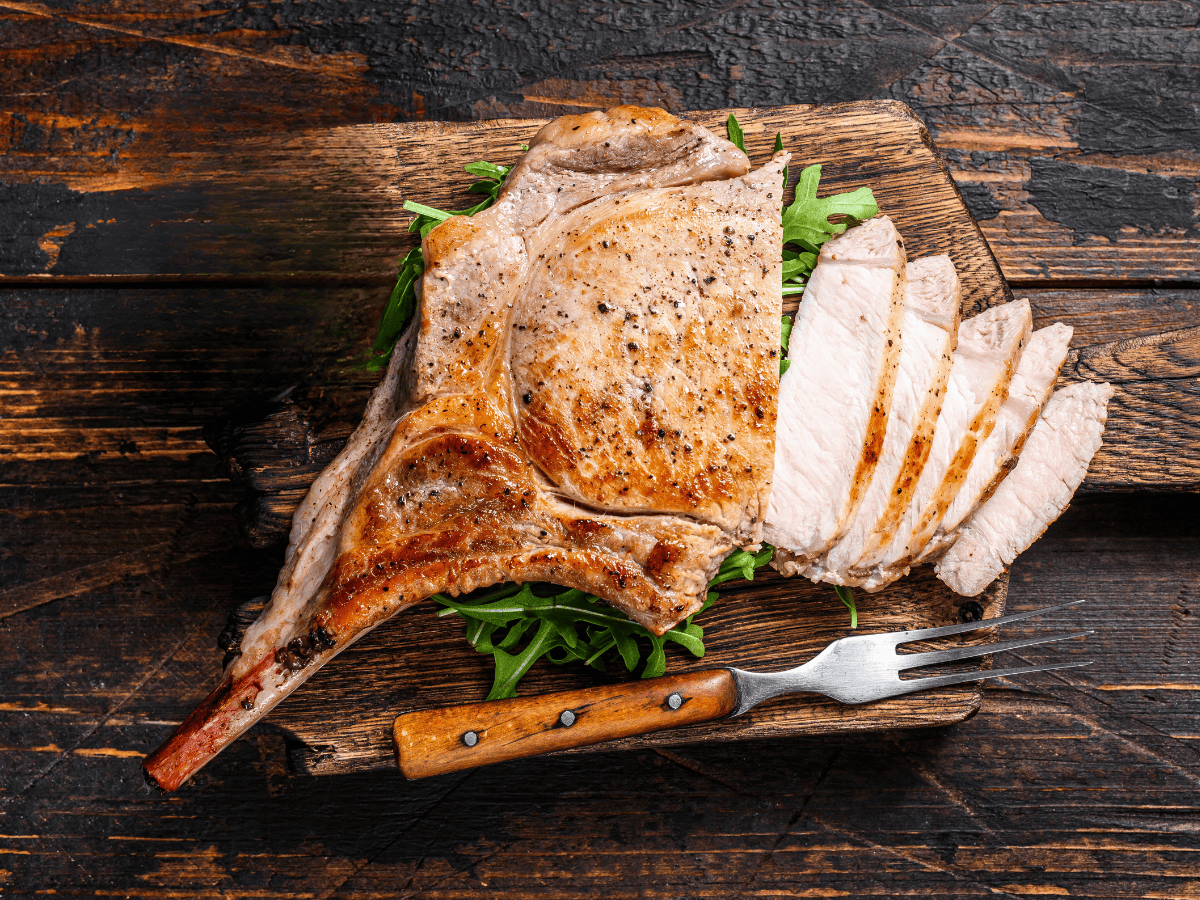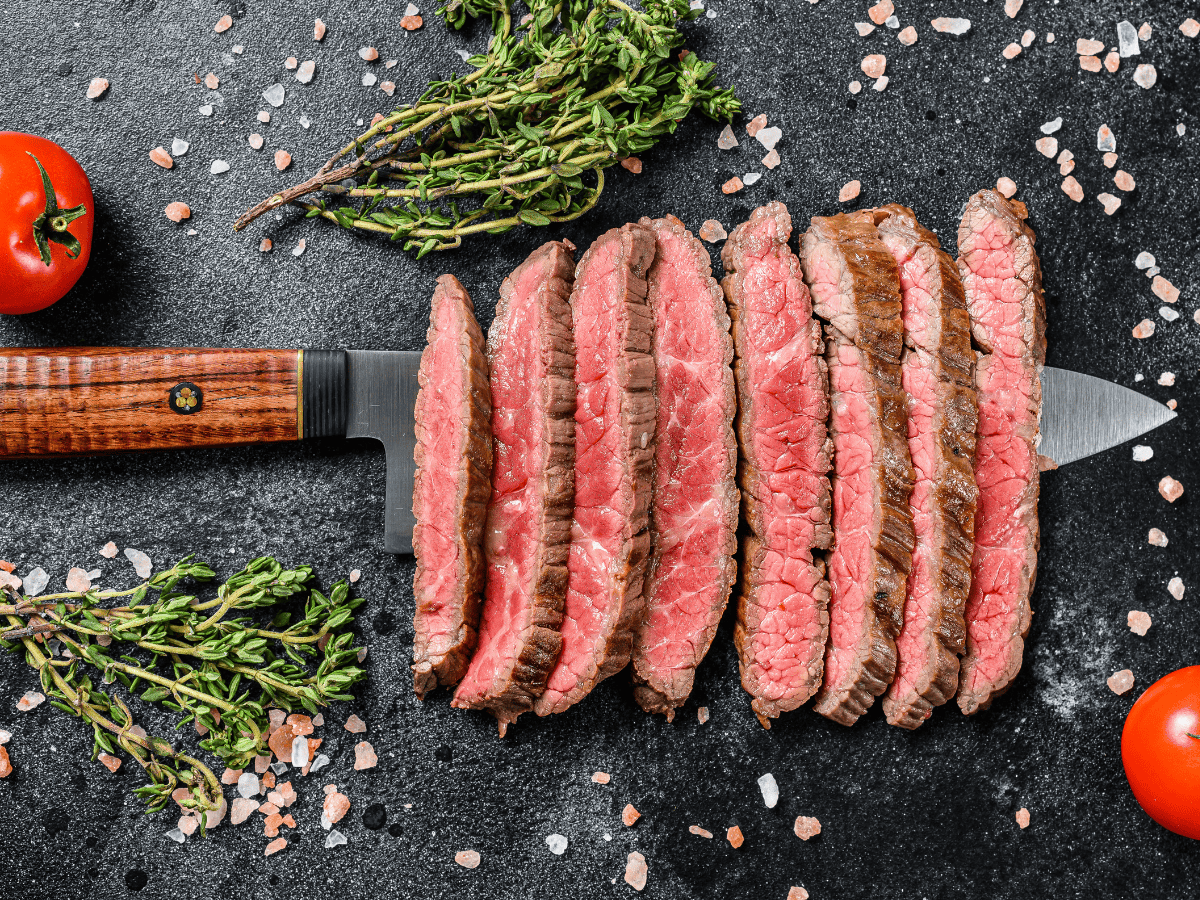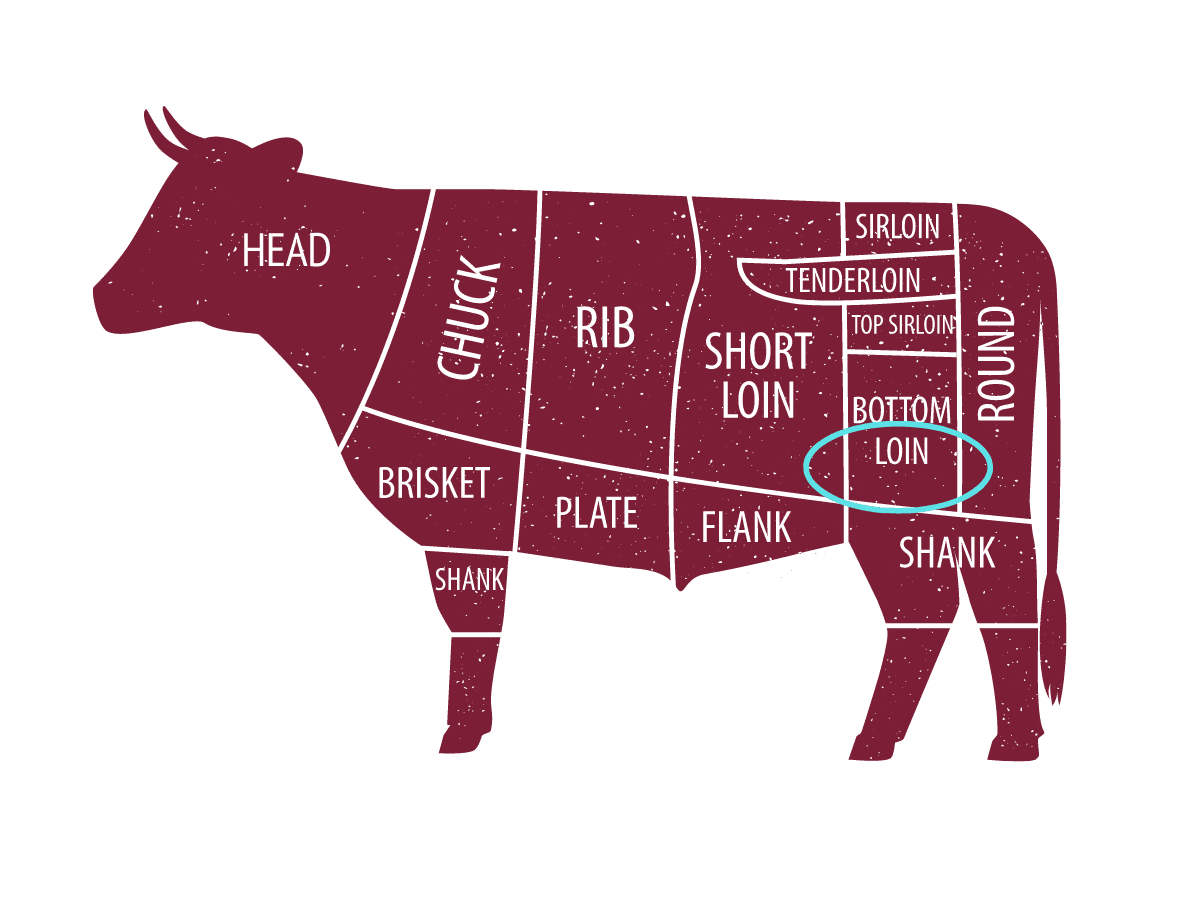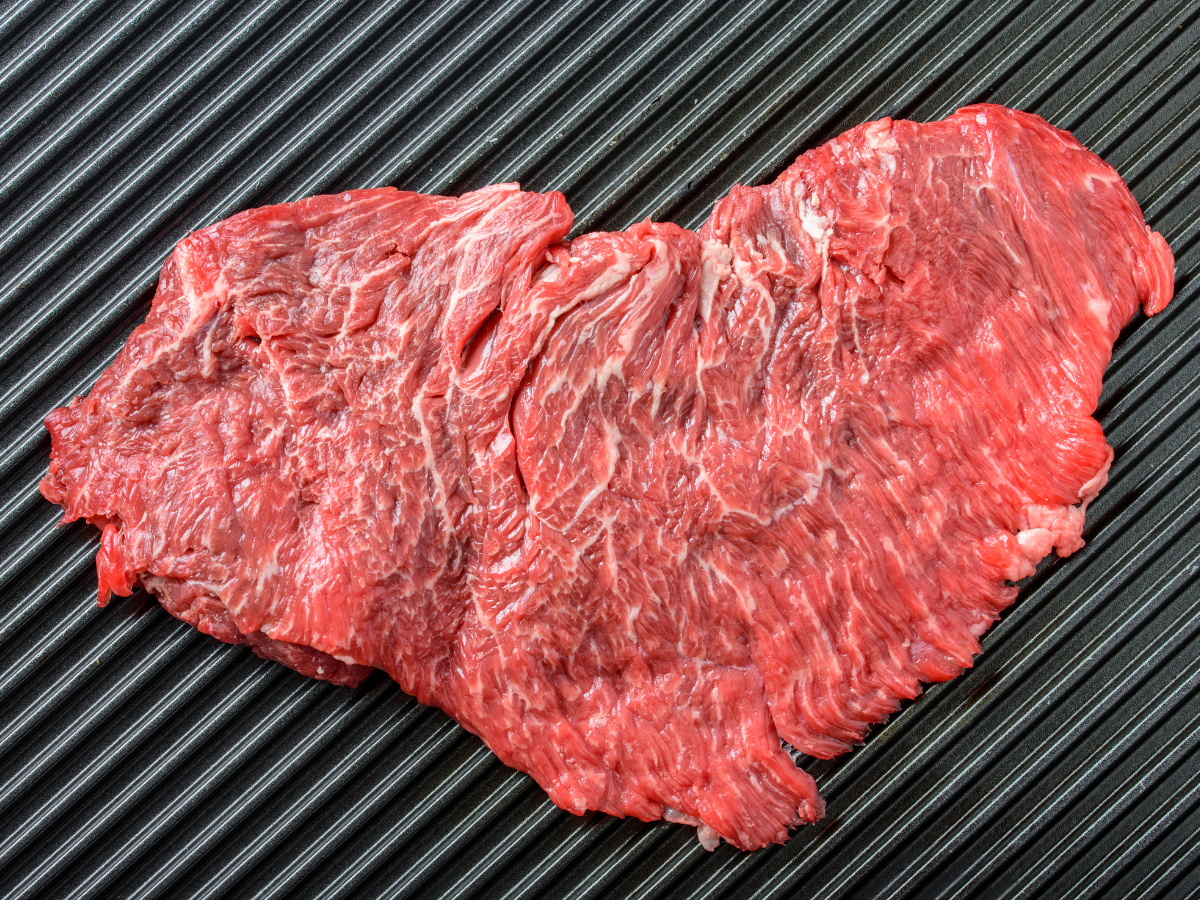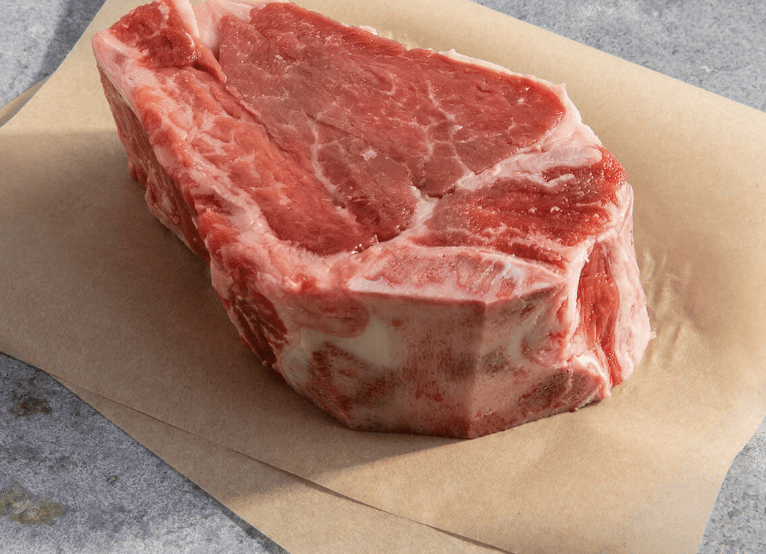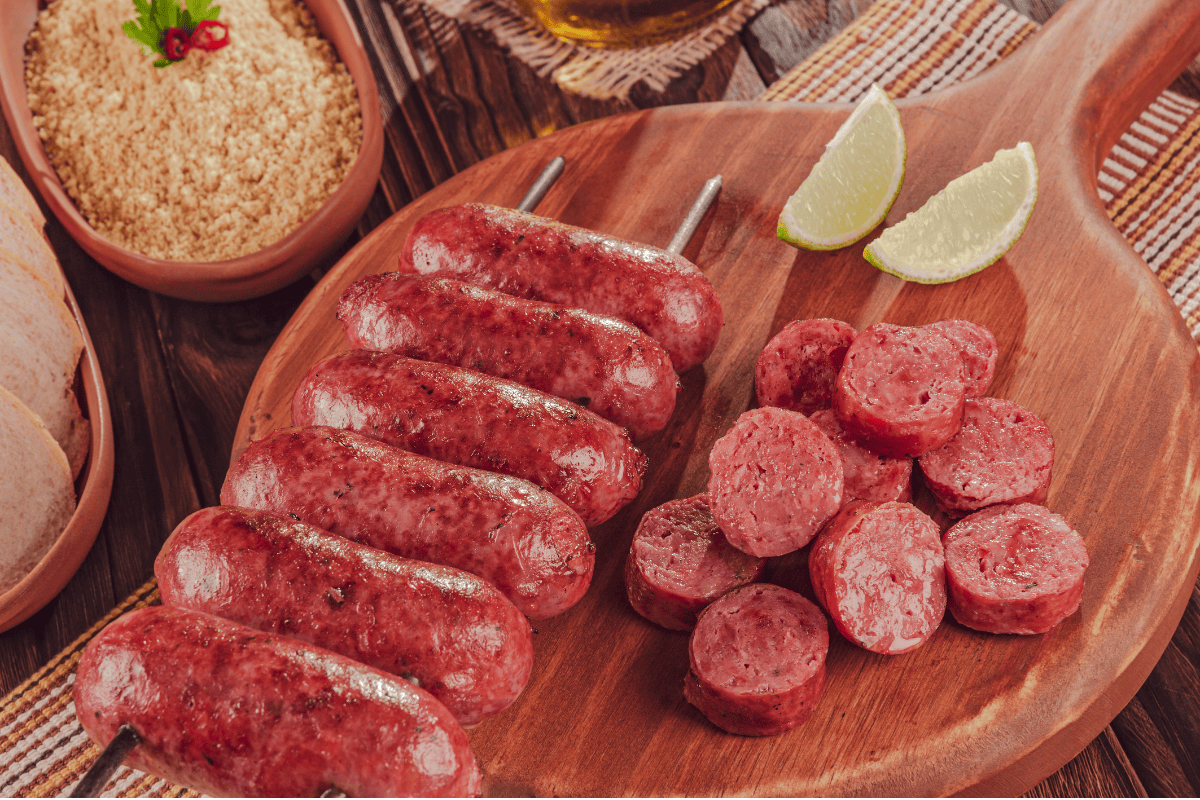
Linguica is a delicious and versatile sausage that adds depth and complexity to a wide range of dishes. Whether grilled, fried, or used as an ingredient in your favorite recipes, linguica is sure to delight your taste buds and elevate your culinary creations.
What Is Linguica?
Linguica is a sausage that has found its way into cuisines around the world. Also known as Brazilian sausage, it has become a staple ingredient in many kitchens. Whether you’re a seasoned food enthusiast or have just started to explore the world of sausages, this ultimate guide will provide you with everything you need to know about linguica.
Linguica is a type of smoked sausage originating from Portugal, where it is a cherished part of the culinary tradition. It is often served alongside rice and black beans and features in feijoada, a signature stew that is considered Brazil’s national dish.
Made from pork seasoned with garlic, paprika, and other spices, Brazilian sausage is known for its robust flavor profile and distinctive smoky aroma. It has a coarse texture and is typically sold in links or coils.
What Does Brazilian Sausage Taste Like?
The flavor of linguica is complex and satisfying. It boasts a perfect balance of savory and spicy notes, with the garlic and paprika lending it a rich, aromatic taste. The smokiness from the cooking process adds depth to its flavor profile, making linguica a standout ingredient in any dish. Whether grilled, fried, or added to stews and soups, linguica brings a bold and delicious taste to the table.
How Do You Cook Brazilian Sausage?
Cooking linguica is a simple and straightforward process that yields delicious results every time. There are a few different ways linguica can be cooked. Here are a few popular cooking methods:
- Grilling: Preheat your grill to medium-high heat and place the linguica links directly on the grill grates. Cook each side for about 7 minutes or until the sausages are evenly browned and cooked through.
- Pan-Frying: Heat your skillet over medium heat and add a small amount of oil. Place the linguica links in the skillet and cook each side for 5-7 minutes, until browned and cooked through.
- Baking: Preheat your oven to 350°F. Place the linguica links on a baking sheet lined with parchment paper and bake for about 20-25 minutes. Make sure to flip the linguica sausages after about 10 minutes.
Linguica is incredibly versatile and can be used in a variety of recipes, including pasta dishes, soups, stews, and sandwiches. Simply slice or dice the linguica and add it to your favorite recipe for an extra boost of flavor.
What Is A Good Linguica Substitute?
If you cannot find Brazilian sausage, the best substitute is chorizo. While it has a somewhat different flavor profile, chorizo shares the spice and smoke of linguica, making it a reasonable replacement. You may also consider spicy smoked kielbasa or andouille. The andouille, especially, has a garlicky, earthy flavor akin to Brazilian sausage.
In some recipes, you might also get away with a cured Italian sausage, like salami or capicola. There is, in fact, a variation of linguica called “linguica calabresa” that is often used in place of pepperoni on Brazilian pizza. This version is so-called because it incorporates Calabrese peppers, an idea first popularized by Italian immigrants to Brazil.
Where Can You Buy Brazilian Sausage?
Linguica can be found in many specialty grocery stores, butcher shops, and markets that carry international foods. But the most convenient option is to purchase it online through Texas de Brazil’s online butcher shop. Our linguica is made with our proprietary blend of spices, which means you’ll get the incomparable taste of Texas de Brazil at home.
Father’s Day is coming up and to celebrate, Texas de Brazil is running a deal on our Brazilian sausage, linguica (lin-GWEE-suh). Now through June 16th, we’re offering a free pack of Brazilian sausage (3 lbs) on online orders over $125. Orders over $300 get the sausage and a pound of our famous picanha thrown in. Visit our shop today to start your shopping!


